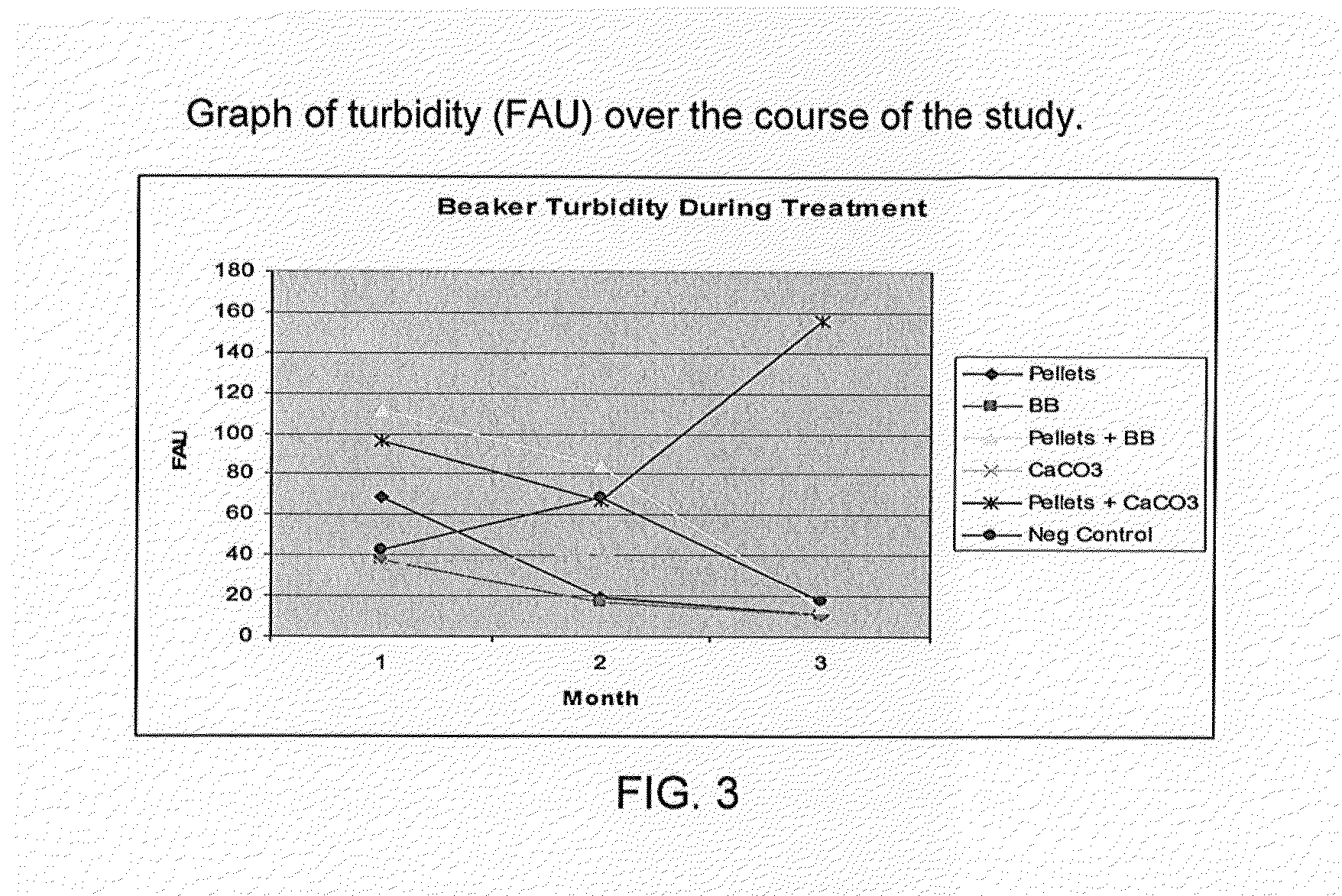Method for Improving Quality of Aquaculture Pond Water
- Summary
- Abstract
- Description
- Claims
- Application Information
AI Technical Summary
Benefits of technology
Problems solved by technology
Method used
Image
Examples
Embodiment Construction
[0014]The genera of bacteria suitable for use in the method of the invention are believed to include any one or more species in the genera Bacillus, Bacteroides, Bifidobacterium, Lueconostoc, Pediococcus, Enterococcus, Lactobacillus, Megasphaera, Pseudomonas and Propionibacterium. Probiotic bacteria that may be generated on-site include any one or more of the following: Bacillus amylophilus, Bacillus licheniformis, Bacillus pumilus, Bacillus subtilis, Bacteroides ruminocola, Bacteroides ruminocola, Bacterioides suis, Bifidobacterium adolescentis, Bifidobacterium animalis, Bifidobacterium bifidum, Bifidobacterium infantis, Bifidobacterium longum, Bifidobacterium thermophilum, Enterococcus cremoris, Enterococcus diacetylactis, Enterococcus faecium, Enterococcus intermedius, Enterococcus lactis, Enterococcus thermophiles, Lactobacillus brevis, Lactobacillus buchneri, Lactobacillus bulgaricus, Lactobacillus casei, Lactobacillus cellobiosus, Lactobacillus curvatus, Lactobacillus delbruek...
PUM
 Login to View More
Login to View More Abstract
Description
Claims
Application Information
 Login to View More
Login to View More - R&D
- Intellectual Property
- Life Sciences
- Materials
- Tech Scout
- Unparalleled Data Quality
- Higher Quality Content
- 60% Fewer Hallucinations
Browse by: Latest US Patents, China's latest patents, Technical Efficacy Thesaurus, Application Domain, Technology Topic, Popular Technical Reports.
© 2025 PatSnap. All rights reserved.Legal|Privacy policy|Modern Slavery Act Transparency Statement|Sitemap|About US| Contact US: help@patsnap.com


